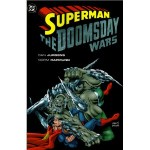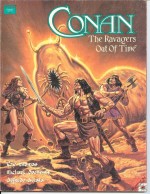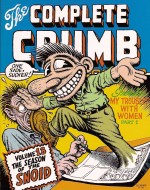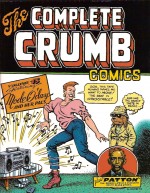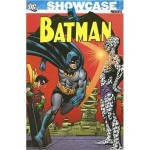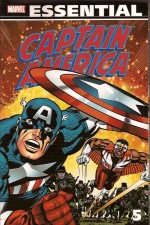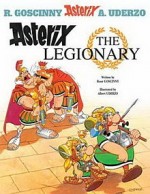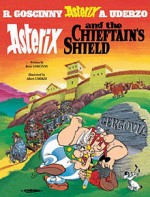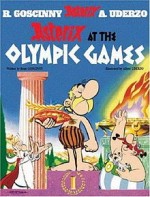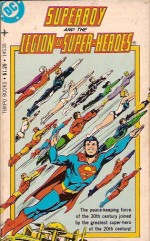
By various (Tempo Books/Grosset & Dunlap)
ISBN: 0-448-14535-9
Here’s another early attempt to catapult comics off the spinner racks and onto proper bookshelves; this time from 1977, coinciding with and celebrating one of the periodic surges in popularity of the venerable Legion of Super-Heroes.
The many-handed mob of juvenile universe-savers debuted in Adventure Comics #247 (April 1958) in a Superboy tale wherein three mysterious kids invited the Boy of Steel to the future to join a team of metahuman champions inspired by his historic feats. Created by Otto Binder & Al Plastino, the throwaway concept inflamed public imagination and after a slew of further appearances throughout Superman Family titles, the LSH eventually took over Superboy’s lead spot in Adventure for their own far-flung, quirky escapades, with the Caped Kryptonian reduced to “one of the in-crowdâ€â€¦
This terrific little black and white tome, part of National Periodical Publications’ on-going efforts to reach wider reading audiences – which began during the “Camp†craze of the 1960s with reformatted Superman and Batman pocket paperbacks and intermittently continued for the next twenty years – is particularly appealing as it leads off with a straight Superboy solo story.
The exploits of the Kid Kryptonian were always problematic. Since his inception (More Fun Comics #101 January/February 1945) the character had been perennially set in the past, “the adventures of Superman when he was a boyâ€. He was always popular and a solid seller, but as the world and the readership grew increasingly more complex in the late 1960s, the vague, timeless “about twenty years ago†settings grew ever-harder to reconcile with the uniform continuity being formed within the cohesively congealing DC universe.
For long term readers, the tales were seen to have occurred anytime between 1929-1957 and eventually DC (as NPP became) simply gave up the ghost and simply told fans to subtract 12-20 years from whatever the date was in Superman. More succinctly: “deal with it, it’s only a comicbook…â€
When the Legion were revived after a nearly two years in limbo, they moved briefly into the back of Superboy before taking over the title (Déjà vu, much?). Thereafter all the Boy of Steel’s adventures took place in the future, not the past…
Tragically, however, that relegated a huge amount of superb comics stories to oblivion: not acknowledged and never included in those reprint collections increasingly targeting the mainstream fan-base. Mercifully, one of those lost tales – from a brilliant run by scripter Frank Robbins and artists Bob Brown & Wally Wood – found its way into this collection for a wider and less picky audience…
‘Superboy’s Darkest Secret!’ (from Superboy #158, July 1969) is a powerful and moving epic which fits nowhere in accepted continuity. In this beautifully rendered tragedy the Boy of Steel discovers his birth parents had actually – and unwillingly – escaped Krypton and now lay interred in a life-pod deep inside a debris field of Kryptonite and space mines. Moreover, the only person who could reunite him with them was the kindly Kryptonian savant who had murdered them and was now determined to resurrect them…!
The Heroes of Tomorrow finally show up in ‘The Six-Legged Legionnaire!’ (Adventure Comics #355, April 1967 by Otto Binder, Curt Swan & George Klein) as Superboy brings his High School sweetie Lana Lang to the 30th century, where she joins in a mission against a science-tyrant as the shape changing Insect Queen. Disaster strikes when she loses the alien ring that enables her to resume her human form…
‘Curse of the Blood-Crystals!’ by Cary Bates, Dave Cockrum & Murphy Anderson comes from Superboy #188 (July 1972); the sixth stunning back-up tale of the unstoppable Legion revival that would eventually lead to the team taking over the title. This clever yarn of cross-and-double-cross finds a Legionnaire possessed by a magical booby-trap and forced to murder Superboy – but which hero is actually the prospective killer…?
This nifty nostalgic nugget ends with a rather strange but genuinely intriguing choice.
By 1970 the team’s popularity was on the wane. They had lost their Adventure Comics spot to Supergirl and become a back-up feature in Action Comics. Moreover, the masterful penciller Curt Swan had left to devote himself fully to Superman…
The shorter stories were bolder and more entertaining than ever, but too many casual readers had moved on. ‘The Legionnaires Who Never Were!’ (Action #392, September 1970, by Bates, Winslow Mortimer & Jack Abel) was their last adventure until popping up in Superboy and presents a brilliant psychological thriller/mystery romp as Saturn Girl and Princess Projectra return to Earth and discover that they no longer exist…. Of course, there’s a sound reason why all their old comrades are trying to kill them…
The Legion of Super-Heroes has long been graced with the most faithful and determined hard-core fans in comics history. Once the graphic novel market was established all of their old adventures became readily available in many different formats, so for most readers and collectors the true value of this scarce back-pocket item probably lies in that solo Superboy treat.
I’ve always harboured a secret delight in these paperback pioneers of the comics biz; however, and if you’re in any way of similar mien, I can thoroughly recommend the sheer tactile and olfactory buzz that only comes from holding such an item in your own two hands…
Wipe them first, though, right…?
© 1966, 1969, 1970, 1972, 1977 DC Comics Inc. All Rights Reserved.

